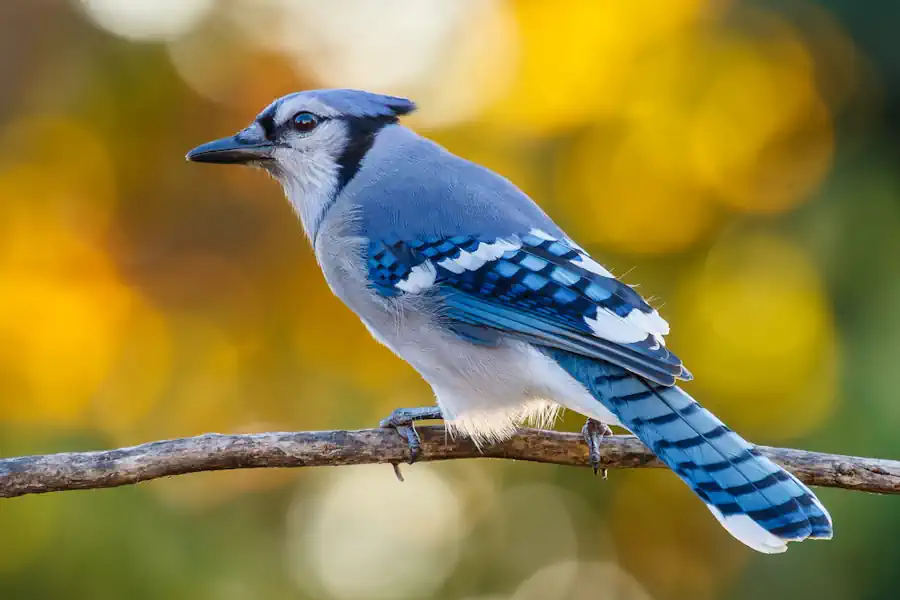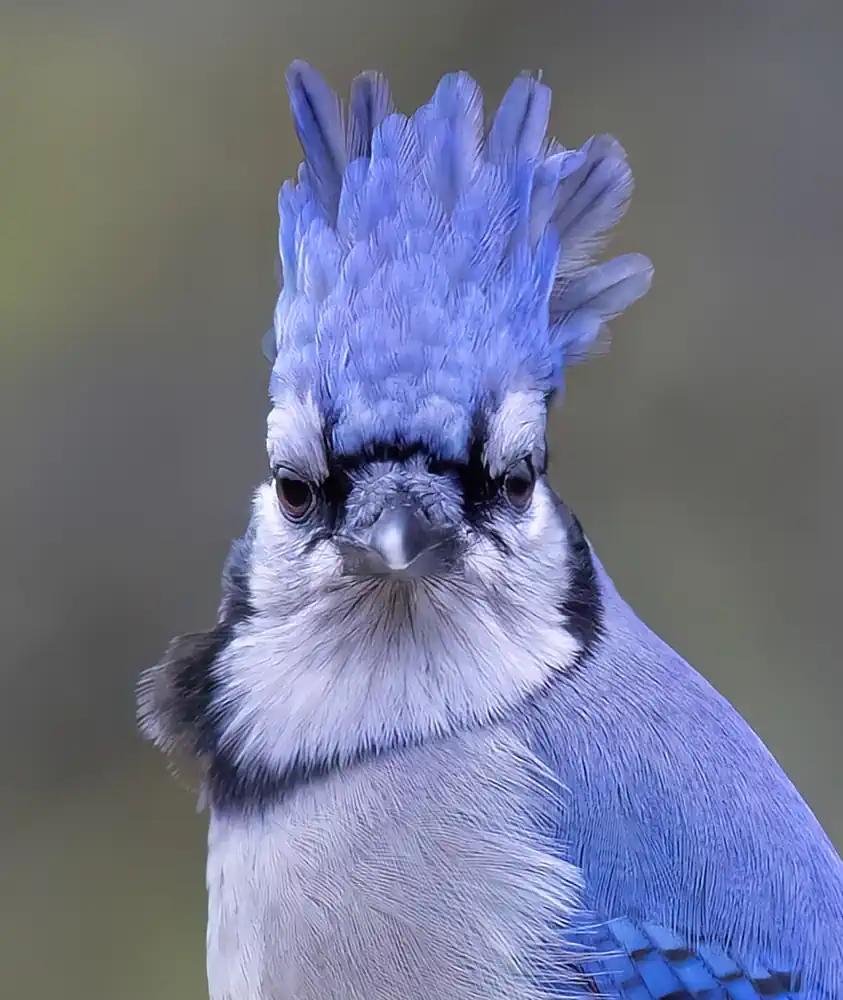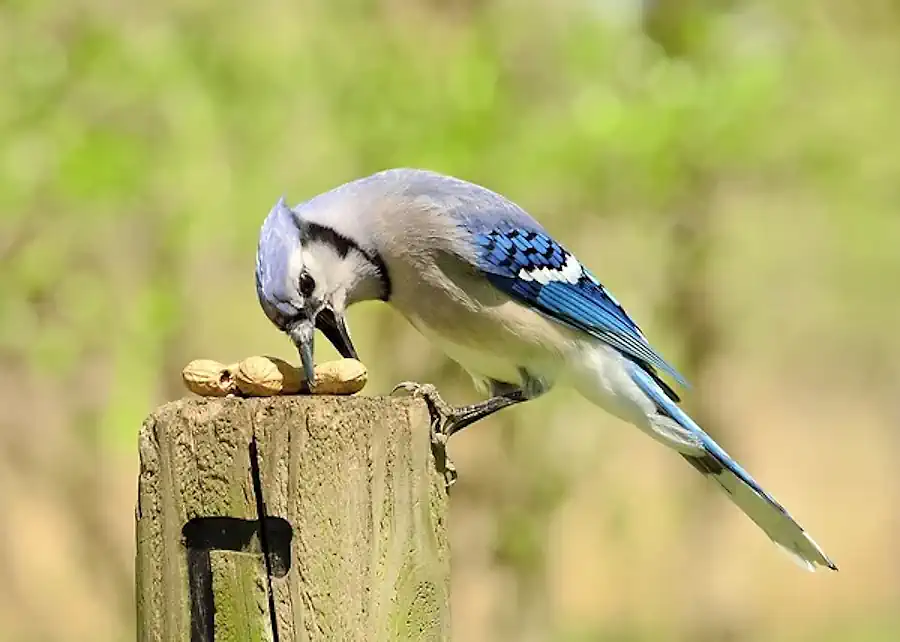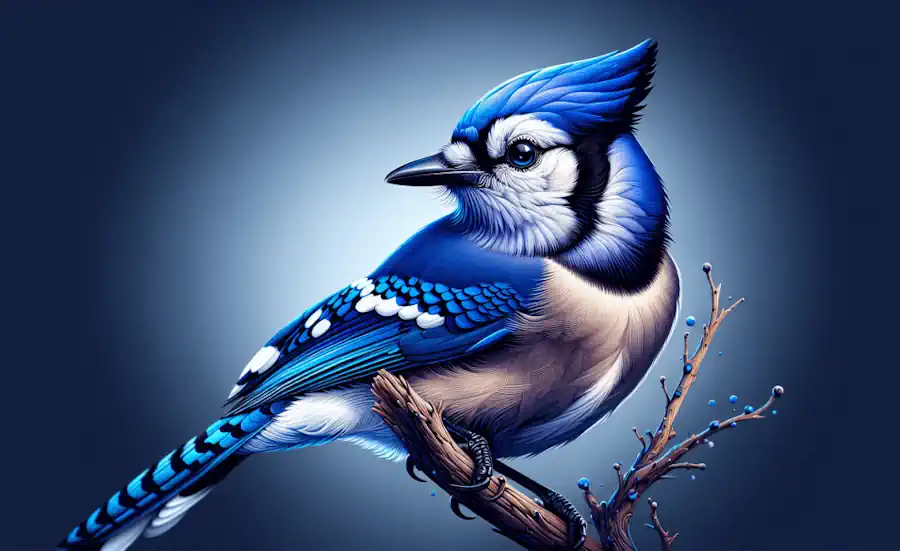The Majestic Bluejay is a stunning bird that graces the skies with its vibrant blue feathers and majestic presence. Known for its striking appearance, the bluejay captivates onlookers with its vibrant blue plumage, contrasting starkly against the greenery of its habitat.

With its distinctive crested head and bold markings, this beautiful bird truly stands out in nature’s tapestry. Whether soaring effortlessly through the air or perched gracefully on a branch, the bluejay is a sight to behold and a testament to the wonders of the avian world.
Physical Characteristics
Size and Weight
The Bluejay is a medium-sized bird, measuring approximately 9 to 12 inches in length from the tip of its beak to the end of its tail. It has a wingspan of about 13 to 17 inches. Despite its relatively small size, the Bluejay has a sturdy build, weighing around 2.5 to 3.5 ounces. This compact size allows the Bluejay to navigate through trees and underbrush with ease.
Coloration
The Bluejay’s vibrant coloration is what captivates many birdwatchers. Its feathers are predominantly blue, with shades ranging from a pale sky blue to a deep sapphire blue. The Bluejay also features striking white markings on its face, throat, and underparts, creating a beautiful contrast against its blue plumage. Additionally, it has black bands on its wings and tail feathers, accentuating its overall appearance.
Distinctive Features
One of the Bluejay’s most distinctive features is its crested head. The crest can be raised or lowered depending on the bird’s mood, and its tufted appearance adds an element of elegance to this already majestic creature. Another notable feature is its strong, sharp beak. With its robust bill, the Bluejay is capable of cracking open nuts and seeds, making it a versatile forager. Additionally, the Bluejay possesses a long, graceful tail that aids in its agile flight.

Habitat
Geographical Range
Bluejays are native to North America and can be found across a vast geographical range. These birds inhabit a wide variety of environments spanning from southern Canada to central Texas, and from the eastern seaboard to the Great Plains. Bluejays can also be found in parts of Mexico and Central America.
Preferred Habitats
While Bluejays are adaptable and can be found in diverse habitats, they particularly thrive in deciduous and mixed forests. The presence of trees provides ample nesting and foraging opportunities for these birds. They are also commonly seen in parks, suburban areas, and gardens, where they take advantage of bird feeders and available food sources. Bluejays are less likely to inhabit dense coniferous forests but are known to venture into these areas during migration.
Feeding Habits
Diet Composition
Bluejays are omnivorous creatures, meaning their diet consists of both plant and animal matter. While their staple diet mainly consists of nuts, seeds, and fruits, they are opportunistic feeders and will readily consume insects, spiders, and small vertebrates when the opportunity arises. Bluejays possess a particular fondness for acorns, which they hoard and store for later consumption.
Foraging Techniques
To obtain their food, Bluejays employ various foraging techniques. They are known for their ability to hammer open nuts and seeds using their powerful beaks. Bluejays will also extract insects from tree bark using their sharp bills. When searching for food on the ground, they use their keen eyesight and hop along, occasionally probing the soil with their beaks to uncover hidden treats.
Breeding
Mating Season
The Bluejay’s mating season typically occurs during the spring and summer months, with peak activity observed between March and July. During this time, males engage in elaborate courtship displays to attract a mate. These displays involve fluffing their feathers, raising their crests, and engaging in animated aerial acrobatics, all while emitting a series of melodious calls.
Nest Construction
Once a pair has formed, they work together to build their nest, usually constructed in the fork of a tree or shrub. The nest is built using twigs, leaves, and sometimes grass, which are intricately woven together to create a sturdy cup-shaped structure. While the female primarily constructs the nest, the male assists by providing materials and guarding the area against potential threats.
Eggs and Incubation
The female Bluejay usually lays a clutch of 3 to 6 pale blue or greenish-blue eggs, speckled with brown markings. The eggs are incubated primarily by the female, though the male may also take turns. The incubation period lasts about 17 to 18 days, during which time the parents diligently care for the eggs, keeping them warm and protected.
Parental Care
Once the eggs hatch, both parents play an active role in raising their young. They work together to feed the hungry chicks a combination of insects, fruits, and seeds. As the chicks grow, the parents gradually introduce them to more solid foods, teaching them how to forage for themselves. The parents also defend the nest and their offspring from potential predators, exhibiting exceptional loyalty and parental dedication.
Vocalizations
Calls and Sounds
Bluejays are highly vocal birds, known for their variety of calls and sounds. They have a loud and distinct “jay-jay” call, which serves as their primary means of communication. This call can be heard echoing through forests and woodlands, often alerting other birds of potential threats or proclaiming territorial boundaries. In addition to their characteristic call, Bluejays produce other sounds, including raspy squawks, high-pitched whistles, and even soft, melodious trills.
Vocal Mimicry
One fascinating aspect of the Bluejay’s vocal abilities is its talent for mimicry. While not as proficient as some other birds renowned for their mimicry skills, such as parrots, Bluejays can imitate a range of sounds, including the calls of other bird species, human voices, and even certain mechanical sounds. This mimicry may serve as a means of expanding their vocal repertoire or as a way to deceive potential threats.
Migration Patterns
Timing
While Bluejays are generally non-migratory birds, some individuals do undertake seasonal movements. Migration patterns tend to vary depending on the region. In the northern parts of their range, Bluejays may migrate in large numbers during the fall and winter months when food becomes scarce. However, in more temperate regions, many Bluejays remain resident throughout the year.
Route Selection
During migration, Bluejays select their routes based on food availability and suitable habitat. They may follow established flyways, taking advantage of river valleys or coastal areas where resources are abundant. Bluejays also have an incredible navigational ability, relying on celestial cues, landmarks, and a keen sense of direction to guide them during their migratory journeys.
Group Behavior
During migration, Bluejays often form small flocks, ranging from a few individuals to larger groups. These flocks provide protection and support during the journey. Bluejays within these groups engage in social interactions, communicating and cooperating to locate food sources and avoid potential predators. This group behavior not only facilitates the migration process but also enhances the Bluejays’ chances of survival.
Predators and Threats
Natural Predators
Bluejays face a variety of natural predators that pose a threat to their survival. These include raptors such as hawks and owls, which prey on both adult Bluejays and their nestlings. Terrestrial predators like cats, snakes, and raccoons also pose a risk to Bluejay populations. Additionally, larger birds such as crows and jays may occasionally engage in territorial disputes, leading to aggressive encounters and potential predation.
Human Threats
Humans can also pose threats to Bluejays. Habitat loss as a result of deforestation and urban expansion reduces the availability of suitable nesting and foraging areas. Pesticide use may lead to a decline in insect populations, indirectly impacting the Bluejay’s food resources. Furthermore, collisions with windows and vehicles can result in injury or death for these birds. Illegal capture for the pet trade and hunting for sport also contribute to human-related threats.
Conservation Status
The Bluejay is not currently considered a threatened species and is listed as being of least concern on the IUCN Red List. However, it is important to monitor their populations and address potential threats to ensure their continued well-being. Conservation efforts should focus on preserving their habitats, promoting responsible pesticide use, raising awareness about the importance of protecting birds, and enforcing legislation against poaching.
Interaction with Humans
Symbolism and Cultural Significance
Bluejays have a rich history of symbolism in various cultures. In some Native American traditions, the Bluejay is associated with bravery and intelligence. It is believed to possess the ability to communicate between the spirit world and the physical world, making it a supernatural messenger. In folklore and literature, Bluejays are often portrayed as clever and cunning creatures, representing adaptability and resourcefulness.
Feeding Bluejays
Many people enjoy attracting Bluejays to their yards by providing food and water sources. Bluejays readily visit bird feeders, where they consume a variety of seeds, nuts, and fruits. They are particularly fond of sunflower seeds and peanuts. Providing a reliable food source can not only bring the beauty of Bluejays closer to home but also contribute to their overall well-being.

Bluejays as Pets
While Bluejays are captivating creatures, they are not suitable pets. They require a specific habitat, diet, and social interaction that cannot be provided in a domestic setting. Additionally, keeping Bluejays as pets may be illegal in many regions, as it threatens wild populations. For the best interest of these birds, it is important to appreciate their beauty and observe them in their natural habitats.
Interesting Facts
Intelligence and Memory
Bluejays are highly intelligent birds and possess excellent memory skills. They can remember the location of multiple food caches, recalling the exact spots months later. This ability helps them survive during harsh winters when food is scarce. Bluejays have also been observed utilizing tools, such as using objects to pry open acorns. Their problem-solving abilities and memory contribute to their adaptability in changing environments.
Cache Behavior
One unique behavior of Bluejays is their cache behavior. Bluejays are known to hoard and store food for future consumption. During the fall, they collect and hide acorns and other nuts in various locations such as tree crevices or the ground. This cache behavior allows Bluejays to have a reserve of food during lean times, providing an efficient survival strategy.
Bluejay vs. Bluebird
Despite the similarity in their names, Bluejays and Bluebirds are distinct species. Bluejays are larger, more vibrant, and known for their raucous calls, while Bluebirds are smaller and more delicate in appearance. Bluejays thrive in woodlands, while Bluebirds are often found in open grassy areas. While both birds share the color blue, they have different characteristics and habitats that set them apart.
Conclusion
The Bluejay’s Allure
The Bluejay’s striking appearance, vocal talents, and intelligent behavior make it a captivating bird to observe. Its brilliant blue plumage, accentuated by white markings and a crested head, makes it a jewel of the skies. The Bluejay’s melodious calls and mimicry skills add to its allure and make it a favorite among bird enthusiasts. Its adaptability and memory prowess further contribute to its mystique in the avian world.

Conservation Efforts
While the Bluejay currently maintains a stable population, continued efforts are necessary to ensure its preservation and well-being. Protecting and preserving its diverse habitats, raising awareness about its ecological importance, and promoting responsible pesticide use are crucial steps in conserving the Bluejay and its fellow avian species. Acknowledging the significance of these birds in various cultures and discouraging their capture as pets further contributes to their conservation. By appreciating and safeguarding the majestic Bluejay, we can promote harmony and biodiversity in our natural world.
